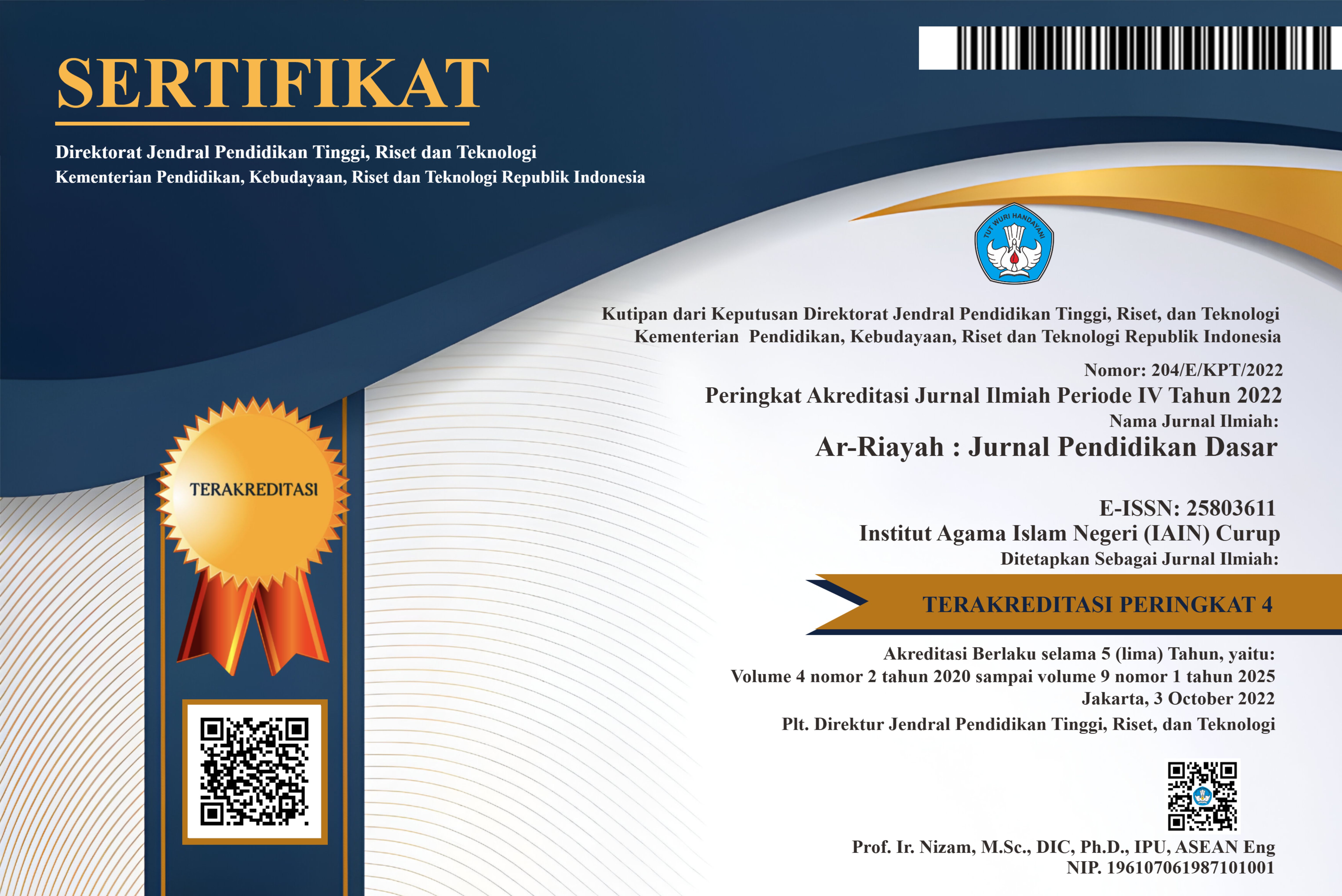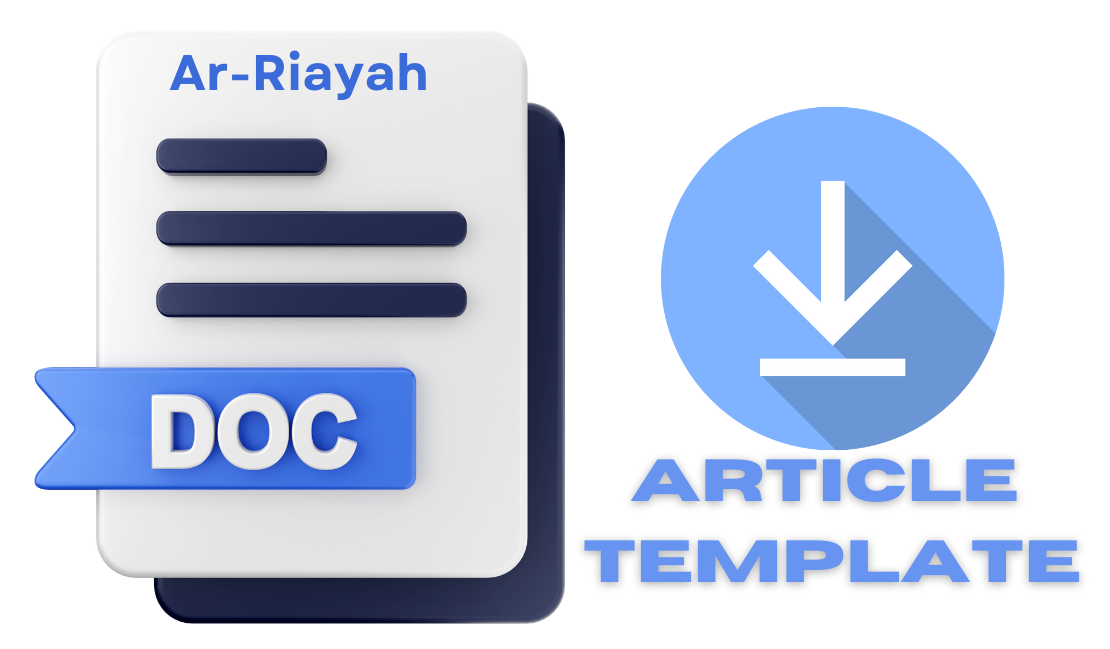Peningkatan Hasil Belajar Siswa Melalui Pendekatan Cooperative Learning Tipe Student Team Achievement Division (STAD) Pada Mata Pelajaran IPS Kelas IV SD Negeri 135 Rejang Lebong
DOI:
https://doi.org/10.29240/jpd.v2i2.662Keywords:
Learning Outcomes, Cooperative Learning Approach Type Student Team Achievement DivisionAbstract
Downloads
References
Asma, Nur.2006. Model Pembelajaran Kooperatif. Jakarta. Depdiknas
Darman, Flavianus, dkk. 2007. UU No. 20 Th. 2003 Tentang Sistem Pendidikan Nasional dan UU No. 14 Th. 2005 Tentang Guru dan Dosen. Jakarta: Visimedia.
Depdikbud.(2006). Kurikulum Tingkat Satuan Pendidikan. Jakarta: Pusat
Dimyati dan Mudjiono. 1994. Belajar dan pembelajaran. Jakarta: Depdikbud Dirjen Dikti.
Isjoni, 2009. Kooperatif learning efektifitaspembelajarankelompok. Bandung.:Alfabeta.
Sagala, 2006. Konsep dan Makna Pembelajaran. Bandung: Alfabeta.
Solihatin, Etin 2008. Cooperative Learning analisisModelpembelajaranIPS. Jakarta: Bumi Aksara.
Wardani I.G.A.K, Dkk. 2004. Penelitian Tindakan Kelas. Jakarta: Universitas Terbuka.
Winataputra, Udin S.2005. Materi dan Pembelajaran IPS SD. Jakarta: Universitas
Terbuka.
Downloads
Published
How to Cite
Issue
Section
Citation Check
License
Authors who publish with Ar-Riayah: Jurnal Pendidikan Dasar agree to the following terms:
Authors retain copyright and grant the journal right of first publication with the work simultaneously licensed under a Creative Commons Attribution-NonCommercial-ShareAlike 4.0 International License (CC BY-NC-SA 4.0) that allows others to share the work with an acknowledgment of the work's authorship and initial publication in this journal.
Authors are able to enter into separate, additional contractual arrangements for the non-exclusive distribution of the journal's published version of the work (e.g., post it to an institutional repository or publish it in a book), with an acknowledgment of its initial publication in this journal.
- Authors are permitted and encouraged to post their work online (e.g., in institutional repositories or on their website) prior to and during the submission process, as it can lead to productive exchanges, as well as earlier and greater citation of published work (See The Effect of Open Access).










